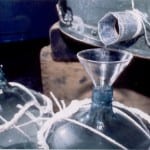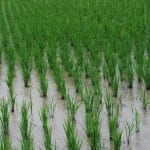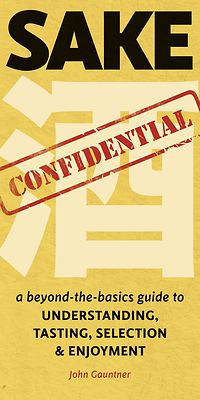Sake is booming
 Sake is booming; it is growing strongly in popularity both inside Japan and around the world. And while this is true, we still have a long way to go. In an effort to curb I.S.E. (irrational sake exuberance), here are some sobering statistics that will encourage us to drink more sake and to promote it actively.
Sake is booming; it is growing strongly in popularity both inside Japan and around the world. And while this is true, we still have a long way to go. In an effort to curb I.S.E. (irrational sake exuberance), here are some sobering statistics that will encourage us to drink more sake and to promote it actively.
Yes, it is beginning to grow in every metric. Exports grow at an average of over ten percent a year. The domestic premium sake market grows at closer to fifteen percent a year. The domestic non-premium contracts about seven percent a year, but that rate of contraction is decreasing, which is mumbo jumbo for saying that the cheap sake market too looks poised to grow soon. But here are some other statistics.
Sake is only 6.9 percent of all alcohol consumed in Japan.
Sure, this is growing slightly as well. But when a product in a market drops below ten percent it is considered an insignificant part of the market. ‘Course, it depends on how you define the relevant sectors. But the truth is that sake has dropped way down and is only starting to pull out of the quagmire of near-extinction.
 Only 3.2 percent of all sake made is exported
Only 3.2 percent of all sake made is exported
Yep. That is all. The silver lining is that this is up from less than two percent a scant three years ago. But with France and Italy exporting more than thirty percent of their wine, sake has a lot of potential for growth.
Sake is but 0.1 percent of all alcohol consumed in the US
This is not meant to be a US-centric newsletter! But the US imports more sake than any other country (with Korea very close behind), about 35 percent of all exported from Japan. And still, sake is only one tenth of one percent of all alcohol consumed in the US. It is likely this dismally low number is similar in other countries as well.
Sake Brewing is a Tough Business
 Sixty percent of all sake breweries are small to mid-sized companies, of which half are either losing money or barely (i.e. insignificantly) profitable.
Sixty percent of all sake breweries are small to mid-sized companies, of which half are either losing money or barely (i.e. insignificantly) profitable.
As the boom in sake is poised to help the craft sake industry more than the large-scale end of the industry, this will likely improve too. But for now, the reality is lots of red ink for about half the sake breweries in existence, in particular (but not limited to) the small family enterprises that comprise 60 percent of the industry.
A Quarter Million Tons of Rice
Last year, a quarter of a million tons of rice were used in sake brewing. Of that, about 90 thousand tons, or 36 percent, were proper sake rice (shuzo kouteki-mai).
 A quarter of a million tons. The fact that only thirty six percent was proper sake rice is not disconcerting at all, since so much non premium sake is made – it is still 65 percent of the market. So the numbers are just about right, even if a bit inconceivably large in scale.
A quarter of a million tons. The fact that only thirty six percent was proper sake rice is not disconcerting at all, since so much non premium sake is made – it is still 65 percent of the market. So the numbers are just about right, even if a bit inconceivably large in scale.
Japan’s agricultural sector, and rice farming in particular, are hardly thriving. Rice is of huge significance to Japan’s agricultural industry, its history and its culture. Sake’s growth really does have the potential to help local communities and the agriculture industry overall. And it all ties in to you and I enjoying it more, where ever we are.
~~~~~~~~~~~~~~~~~~~~~~~~~~~~~~~~~~~~~~~~~~~~~~~~~~~~~~~~~~~~~~~~~~
Interested in sake? Check out my most recent book, Sake Confidential.





